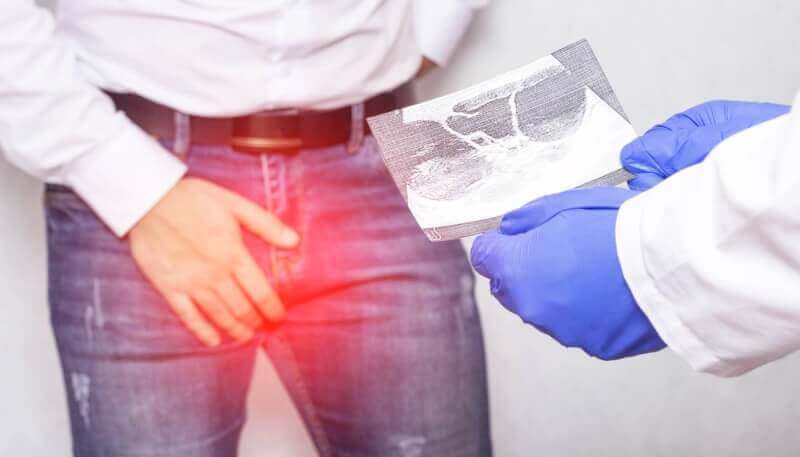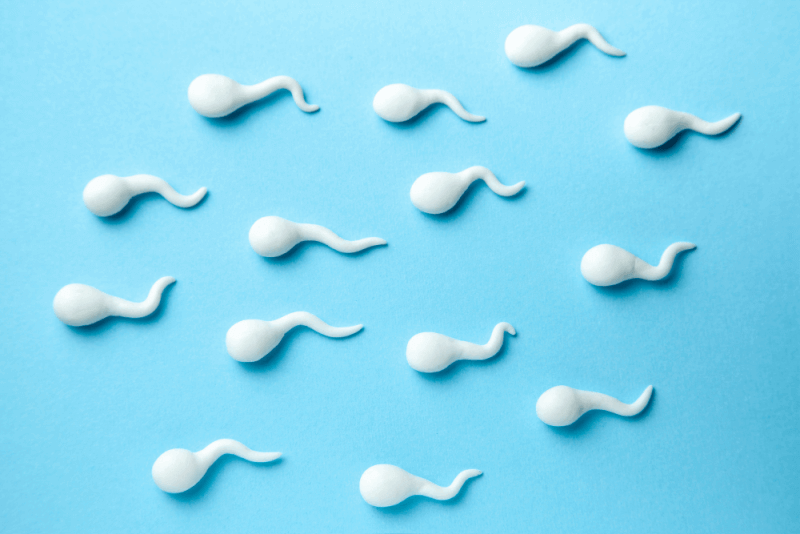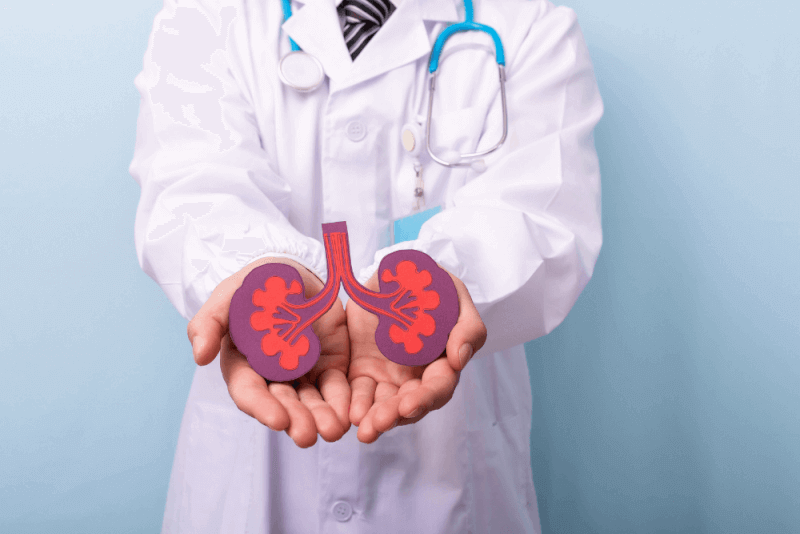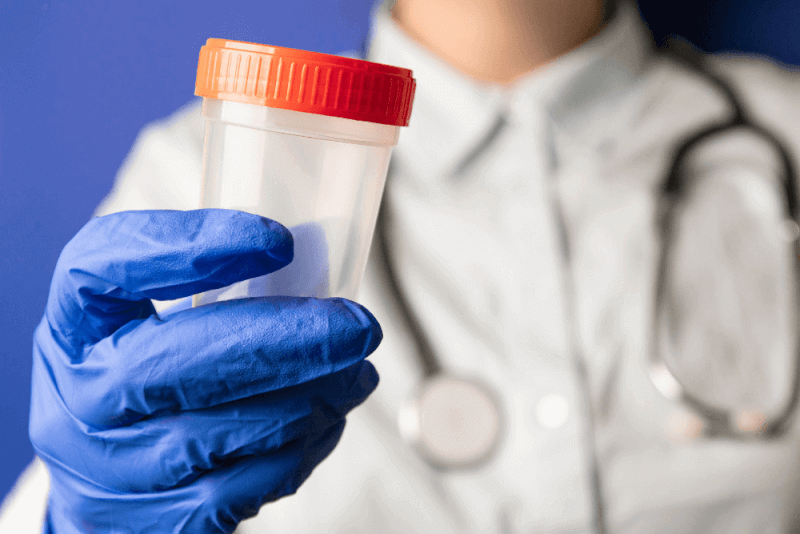30-Second Summary
- Usually occurs during adolescence and progresses over time.
- The exact cause of varicocele is unknown. However, it is thought to stem from malfunctioning valves inside the veins that are supposed to ensure blood flows in the right direction.
- Varicoceles are commonly found in the left testicle. They usually exist without showing any symptoms.
- Varicocele diagnosis is typically made through visual examination and palpation.
What is Varicocele?
Varicocele is a term for the enlargement of veins within the loose bag of skin that holds the testicles. These veins are responsible for carrying deoxygenated blood from the testicles back to the lungs. In the case of varicocele, the blood instead of reaching its destination tends to pool in the veins.
It usually develops during adolescence and progresses over time. A varicocele can cause some discomfort but typically does not lead to complications. In cases where complications occur, issues such as insufficient development of the testicles and inadequate sperm production may be observed. Treatment is necessary if complications arise.
Causes of Varicocele
The exact cause of varicocele is unknown. However, it is thought to originate from malfunctioning valves inside the veins that are supposed to ensure blood flows in the right direction. Additionally, the veins in the left testicle follow a different path compared to those on the right side. This variance contributes to varicoceles being more common on the left side.
Symptoms of Varicocele
Varicocele is commonly seen in the left testicle and often exists without any symptoms. When symptoms do occur, they may include the following:
Pain
The pain caused by varicocele is dull and aching. It is more frequently observed while standing or later in the day. Lying down can relieve the pain.
Scrotal Mass
In cases of a large varicocele, a mass resembling a bag of worms can be seen on the testicle. Smaller varicoceles are only noticeable upon touch.
Difference in Testicle Size
The testicle with the varicocele typically appears smaller than the other. This difference is usually easily noticeable.
Infertility
Varicocele can make it difficult to father a child, though not all cases result in infertility.
Diagnostic Criteria for Varicocele
The diagnosis of varicocele is generally established through visual examination and palpation, which can be performed while lying down or standing. During a standing examination, patients are asked to take a deep breath and hold it while straining, a procedure known as the Valsalva maneuver, which facilitates the diagnosis of varicocele.
Imaging Tests
Imaging tests can also be used in the diagnosis of varicocele. Ultrasound imaging is utilized for this purpose, providing information on the following aspects:
- Confirmation of diagnosis
- Determining the characteristics of the varicocele
- Ruling out other potential causes of the symptoms
- Investigating the presence of any lesions or masses that could obstruct blood flow
Treatment Methods for Varicocele
Varicocele often does not require treatment. However, treatment may be recommended if additional health problems such as infertility are present. Varicocele treatment can also be part of infertility treatment.
Embolization
Embolization is suggested as an alternative to varicocele surgery. In this procedure, a small barrier is created to block a vein. This involves a radiologist inserting a small tube into a vein through the groin or neck. Local anesthesia is sufficient for the insertion site.
Using an imaging system, the tube is guided to the treatment area in the groin. The doctor then releases coils or a solution that induces scarring to block the testicular vein. This procedure takes about an hour.
Recovery time is shorter compared to surgery, and patients can return to work or school within 1 to 2 days. They can start exercising again after a week.
Varicocele Surgery
The goal of varicocele surgery is to close off the affected veins to redirect the blood flow to healthy veins. This is facilitated by the presence of two venous vessels and an arterial vessel that supply blood to the testicles.
In varicocele surgery, the flow of blood in the problematic vein is stopped by suturing or clipping. Currently, two common methods are used, both requiring general anesthesia.
Microscopic Varicocelectomy
This method involves making a small incision in the groin. Then, using a powerful microscope, the surgeon identifies and ties off several small veins. This process typically lasts 2 to 3 hours.
Laparoscopic Varicocelectomy
In this procedure, several small incisions are made in the lower abdomen and laparoscopic instruments are used to reach the testicles through these incisions. Since the network of veins over the groin is less complex, fewer veins need to be tied off. Therefore, this procedure lasts about 30 to 40 minutes.
Benefits of Varicocele Surgery
The potential benefits of varicocele surgery include:
- The affected testicle may return to its normal size.
- If performed during adolescence, testicular development can continue normally.
- There may be an increase in sperm count.
- Sperm abnormalities may be corrected.
- It may enhance fertility.
Complications of Varicocele Surgery
While varicocele surgery is generally considered safe, it does carry some risks, including:
- Fluid accumulation around the testis
- Recurrence of varicocele
- Infection
- Arterial damage
- Chronic testicular pain
- Blood accumulation around the testis
Recovery Process After Varicocele Surgery
Pain after varicocele surgery is usually mild but can last from a few days to several weeks. Pain medication may be prescribed post-surgery.
Patients can usually return to work or school a week after the surgery. It is advised to wait two weeks before starting exercises.
Varicocele and Sexuality
The progression of varicocele can damage testicular functions, leading to reduced production of male hormones. As a result, patients may experience sexual dysfunction, such as erectile problems, which can affect their sexual life. Therefore, varicocele is considered a condition that can impact sexual health.
Varicocele and Having Children
Fertility issues are not typically expected in the early stages of varicocele, but its progression can increase the risk of infertility. Furthermore, even individuals with a mild degree of varicocele can experience infertility after having children initially.
If infertility occurs due to varicocele, treatment is necessary to conceive. Post-surgery, it is important to adopt healthy lifestyle habits to improve sperm quality. Additionally, assisted reproductive techniques can be utilized.
Varicocele Complications
Varicocele can make it difficult to regulate temperature in the testicles. Increased temperature can lead to oxidative stress and toxin accumulation, which can cause the following complications:
Poor Testicular Health
In adolescents, varicocele can hinder testicular growth, hormone production, and testicular functions. Additionally, tissue loss due to varicocele can cause the testicles to shrink.
Infertility
Not every case of varicocele results in infertility. However, infertility is seen in about 10% to 20% of all cases. Furthermore, about 40% of men with infertility have varicocele.














